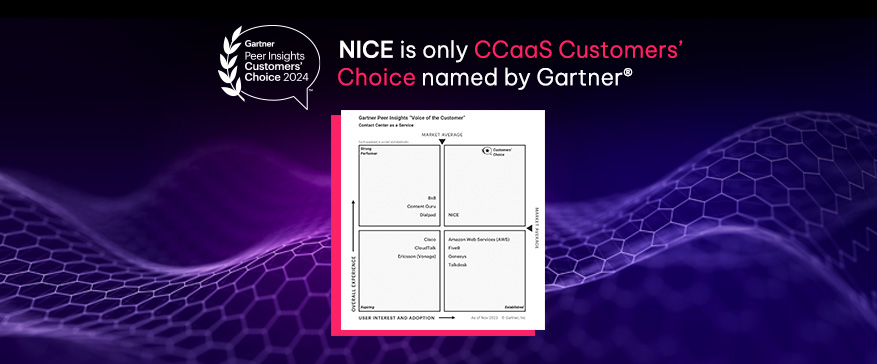So, how can retailers keep up with ever-changing customer expectations?
The internal organizational struggles you face may include contact center agents seeing customer information differently from how customers experience a self-service digital option or a responsive chatbot. This can lead to disjointed customer journeys and frustrated employee experiences. But don't worry, there is a solution.The answer lies in an integrated customer feedback strategy, which relies on an integrated feedback management system. By gathering and analyzing customer feedback across all touchpoints, retailers can gain valuable insights into customer satisfaction and preferences, leading to improved in-store experiences, consistent improvements, and personalized communication.
Create a unified customer view
To provide a seamless omnichannel experience, create a unified customer view across all touchpoints. This means integrating all your systems so they communicate with each other, providing consistent information to both customers and employees.For example, if a customer makes a purchase online, an employee should be able to see that purchase in their account information when they visit your physical store. Similarly, if a customer contacts your contact center with a question, the agent should be able to see the customer's previous interactions with your brand, regardless of the channel they were using.By creating a unified customer view, you can ensure that your customers receive consistent and accurate information, regardless of the touchpoint they are using. This will lead to a more seamless and convenient customer experience.In retail, better and more complete information can also lead to fewer returns, less abandonment of online shopping carts, and smart suggestions for future purchases. Consider how agents can help customers in more proactive ways. A customer contacts customer service via chat to inquire about a product delivery. The agent can see purchase and contact history and Voice of the Customer feedback, like sentiment and CSAT scores. This empowers the agent to reassure the customer about the delivery and recommend installing the product app, which can provide real-time information on their delivery. The customer feels reassured and empowered for next time. Plus, mobile app e-commerce spending is up year over year[3]. others So, this is really a win/win/win!Gather feedback and multiple touchpoints
Feedback shouldn’t begin and end with one touchpoint. We live in an omnichannel world, so collect feedback throughout the customer journey, leveraging many channels. This can include feedback from your contact center, your website, your social media channels, and your physical stores.You might already collect feedback from your contact center by conducting customer satisfaction surveys after each voice interaction. You can also get feedback from digital channels like chat and chatbots, messaging apps, and your website by using website analytics to track customer behavior and identify areas for improvement. Go beyond your branded channels by monitoring customer comments and reviews on social media. And don’t forget about collecting feedback from employees both in your contact center and in-store.By gathering feedback from multiple touchpoints, you can identify areas where the customer experience can be improved. This will help you make data-driven decisions that will enhance the customer experience and create more efficiency for both customers and employees.Analyze and act on customer feedback
Once you have gathered feedback from multiple touchpoints, you need to analyze it and act on it. This means identifying patterns and trends in the feedback and developing action plans to address them.For example, if data shows that customers are frequently calling your contact center with the same issue, you can develop a self-service option to address that issue. If you notice that customers are frequently complaining about long wait times in your physical stores, you can increase staffing levels during peak hours.Brands like Sephora and Target have leveraged feedback from contact centers or digital feedback to improve retail store locations and shape in-store offerings. By listening to customer feedback, they were able to improve their in-store experience, leading to increased customer satisfaction and loyalty.In addition to improving in-store experiences, an integrated feedback management system can also improve personalization in customer communications. For instance, by understanding customer needs and preferences, retailers can personalize their communication and provide tailored recommendations. This can lead to increased customer engagement, loyalty, and ultimately, sales.Prevent churn and drive loyalty for a winning combination
A wireless provider was looking for a comprehensive view of the customer experience. This meant an integrated feedback approach to understand the omnichannel experience and drive insights to improve in-store experiences along with sales and service journeys. Customers were invited to give feedback on where they were on their journey. Feedback was collected after service and technical interactions and via SMS surveys following in-store visits.By focusing on the customer’s overall experience, the NICE VOC program gained actionable insights from Likelihood to Recommend (LTR) scores and comments to ensure more targeted actions for improvements across the customer journey. Real-time, targeted agent coaching helped improve First Call Resolution (FCR) and help agents succeed. These insights drove actions that increased customer loyalty and positive feedback. Further, thanks to text analytics identifying churn-risk terminology, the company established an active service recovery team. This helped customers feel valued by receiving proactive outreach from company representatives to help them understand their plans, answer questions, and keep them as a customer.By committing to the insights-to-improvement cycle, customers will feel heard when they see their feedback driving real change in their experiences. They see and feel the improvements in their actual experiences!Integrated feedback management is essential
The success of a feedback-driven approach highlights the importance of integrated feedback management in retail. By collecting feedback across all touchpoints, retailers can gain a comprehensive view of their customer's experiences and preferences. Retail provides a unique experience for a customer who wants to shop how and when they want. While digital experiences provide convenience, customers still report a desire to touch, feel, and try on items as a driver to visit stores.This allows retailers to make data-driven decisions about everything from product development to store layout. For example, if a retailer notices that customers are consistently providing negative feedback about a particular product, they can make changes to improve the product or discontinue it altogether. Similarly, if customers are consistently providing positive feedback about a particular store location, the retailer can replicate that store layout in other locations. These experience-driven changes mean customers will be more likely to shop and spend with a specific brand.Integrated feedback management also allows retailers to offer personalized experiences to customers. By gathering data on customers' preferences and purchase history, retailers can offer tailored recommendations and promotions. This not only enhances the customer experience but also increases the likelihood of repeat purchases and customer loyalty.Keeping up with changing customer expectations
As customer expectations continue to evolve, retailers must stay adaptable and leverage technology to stay ahead of the competition. This means continually gathering feedback from customers and using that feedback to make data-driven decisions about the customer experience.

[2] 2021 Digital Trends, Adobe
[3] Mobile app trends: 2023 edition, Adjust









